Vintage Mac News is a roundup of news related to vintage Macs* and other older Apple products. For other Mac and Apple news, see Mac News Review. For iBook, PowerBook, and other portable news, see The ‘Book Review. iPad, iPod, iPhone, and Apple TV news is covered in iNews Review.
Purchases made through links to Amazon.com and Apple’s iTunes/iBook/App/Mac App Store support Low End Mac.
News & Opinion
- Why I Refuse to Use Linux on My Mac
- Mac OS X Tiger PPC Page on Facebook
- Sharing Files Across OS X, the Classic Mac OS, and Linux
- The Rebirth of ResExcellence
History
- Looking Back at the 20th Anniversary Mac
- The Macintosh That Saved Apple
- Egg Freckles Remembers the SuperDisk
- The PowerBook G3 Era
Software
Vintage Mac Deals
News & Opinion
Why I Refuse to Use Linux on My Mac
My Mac Collection’s Taylor Almond echoes the thoughts of many Mac users who have also tried running Linux on their PowerPC hardware:
“In the time that I’ve been a PowerPC Macintosh user, I’ve noticed a strong fascination with removing OS X from Macs and replacing it with various flavors of Linux. While this may help your Mac run a little faster, here’s my justification for refusing to do so.”
“First and foremost, Linux’s UI is a snooze-fest . . . you’re not going to enjoy the view.
“Have you ever used the terminal? If you answered, ‘no’ or ‘what’s the terminal?’, then you’ve got a rude awakening coming. While certain flavors of Linux (like Ubuntu) have become more user friendly in the past few years, you’ll likely be typing commands into the terminal at some point or another.”
“Looking for help with a problem on PowerPC Linux? . . . While there are a lot of Linux users out there, there are far more users on OS X . . . so when you need help with something on Linux, there are far fewer websites and individuals to get help from.”
“…you’re probably thinking, ‘This guy would rather use an OS from 2007 (or earlier) instead of an up to date OS like Lubuntu or MintPPC Linux?’ I understand the point; and I agree that these Linux flavors continue to receive up to date software, but ‘up to date’ doesn’t always mean better.
“I have yet to see a Linux software suite as user friendly as iLife or a Linux office suite that’s as widely compatible as Microsoft Office for Mac. I’d much rather use Microsoft Office for Mac 2008 than OpenOffice any day of the week….
“Do you still watch Flash video on your Mac? Say goodbye to that. While PowerPC users have been getting by using the outdated (and insecure) Flash Player 10 for the past couple years, there is no Flash on PowerPC Linux . . . period.”
“One cannot simply install a PowerPC build of Ubuntu, Lubuntu, or MintPPC and expect it to work perfectly.
“Before installing a Linux build on your PowerPC, you’ll need to make sure your specific Macintosh model is supported. It’s quite a let-down to go to the trouble of installing Linux just to find out that my AirPort card isn’t supported, or that my graphics card doesn’t support hardware acceleration.
“To wrap things up, don’t think I’m a Linux hater . . . because that’s not true at all. Open-Source platforms like Linux bring a new level of ingenuity to the tech world (I own an Android phone for this very reason); but Linux on PowerPC Macs is just not an enjoyable experience.”
Publisher’s note: This article won’t make the Linux lovers at PowerPC Liberation happy. The reality is that if you want the best Linux experience, you run it on x86 hardware, not that old G3 or G4 Mac that can so capably run Mac OS X 10.4 Tiger. That said, if the old Mac is no longer in active duty, you might want to try Linux on it just to see whether it might give some new life to an old, retired Mac. In that case, see the Lubuntu Install Guide at PowerPC Liberation, as this is probably the best distro to start with. dk
Link: Why I Refuse to Use Linux on My Macintosh
Mac OS X Tiger PPC Page on Facebook
Looking for a Facebook page with more specific support for Mac OS X
10.4 on PowerPC Macs? Check out Mac OS X Tiger PPC, which bills itself as “a community page for Mac OS X Tiger PowerPC users. Share apps or help resolve issues.”
It also reminds us that when Apple introduced Tiger in 2007, it called it “the world’s most advanced operating system.” And it’s still useful.
Link: Mac OS X Tiger PPC
Sharing Files Across OS X, the Classic Mac OS, and Linux
If you have a home or office network and a mixed environment with OS X 10.4 Tiger, 10.7 Lion, Mac OS 9, and Linux to share files on, you have several options, and Dan at PPC Luddite has some helpful advice:
“If you don’t mind rebooting and need to move large files quickly, Target Disk Mode is a good option. Target Disk Mode works on any Mac with native FireWire. Just start up holding the ‘T’ key, attach it to another Mac via FireWire, and it will automount as an external hard drive on Macs running Mac OS 8.6 or later, and on any recent Linux distribution, too.
“Another option is AFP (Apple Filing Protocol). This is the ‘Personal File Sharing’ option in OS X’s Sharing preferences. After Tiger it was changed to just ‘File Sharing,’ which is also the name of the corresponding control panel in OS 9. In Linux, you need to install the Netatalk package for AFP client and server capabilities, no post-install configuration necessary unless you want to do something fancy😉
“For sharing between OS X machines, just activate the File Sharing option on the server side, then on the other Mac choose ‘Connect to Server…’ from the Finder’s Go menu, enter its router IP address (afp://xxx.xxx.x.xxx), followed by the server machine’s administrator name and password. To connect a Linux machine, go to the network folder in your file manager and where you see your host’s network icon, double click it and enter name and password. If you don’t see the icon you can also enter the IP address in the text field.
“When adding OS 9 to the mix, there are a few caveats. Apple has been deprecating legacy AppleShare and AppleTalk services like crazy, so a lot of the older stuff doesn’t ‘just work.’ I can say that I can network with Tiger and Linux hosts using the Network Browser application in OS 9. And when using OS 9 as a server, make sure the TCP/IP box is checked in OS 9’s File Sharing control panel. With Snow Leopard, I could only connect to an OS 9 server, not the other way around.”
“And a last note about Netatalk on Linux, there’s a bug which causes it to sometimes use 100% CPU after the server side disconnects, forcing you to kill the background process. Maybe one of these days they’ll fix it:)
“There’s also SSH and SFTP (SSH File Transfer Protocol). The server side is activated in OS X with the Remote Login option in the Sharing preferences. Linux systems usually have the client and server software automatically installed with the openssh-client and openssh-server packages. As far as clients go, Cyberduck is a great SFTP client for OS X (3.2.1 for Tiger available in their changelog section). There’s Filezilla or bareFTP for Linux, or you can even connect through a file manager. And there’s an OS 9 SSH client called Nifty Telnet SSH.
“There’s also ftp, but that’s too boring to write about….”
For all the details, see the full article.
Link: Sharing Files Across OS X, Classic, and Linux Macs
The Rebirth of ResExcellence
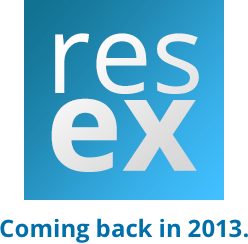 Old timers are sure to remember ResExcellence, a site that goes way back to 1997 (the same year we launched Low End Mac). The idea behind ResExcellence was helping you hack your Mac by editing resources – mostly done using Apple ResEdit app – to make it work the way you wanted it to.
Old timers are sure to remember ResExcellence, a site that goes way back to 1997 (the same year we launched Low End Mac). The idea behind ResExcellence was helping you hack your Mac by editing resources – mostly done using Apple ResEdit app – to make it work the way you wanted it to.
According to the site’s new home page, it’s coming back in 2013 under new ownership and taking a new approach while trying to remain faithful to its roots. And the old site archives are still available.
Welcome back!
Link: ResExcellence
History
Looking Back at the 20th Anniversary Mac
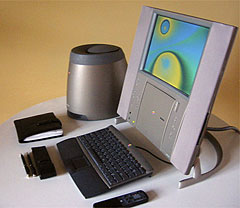 Stephen Hackett of 512 Pixels remembers the most expensive Mac of the past 20 years:
Stephen Hackett of 512 Pixels remembers the most expensive Mac of the past 20 years:
“At Macworld San Francisco in January of 1997, Apple announced the 20th Anniversary Macintosh. Built to celebrate the company’s birthday which had occurred the previous year, the machine was constructed with gold-colored plastics, fabric and leather. It shipped on March 20, 1997 and a retail price of US$7,499.
“Apple manufactured only 12,000 TAMs, with a release run of 11,601. The remaining 399 were kept by Apple for use as spare parts. The machine was only for sale in the US and UK, as well as Japan, France, Germany.”
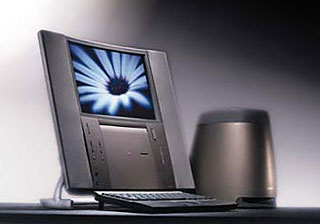 “The machine came with a leather CD case and a leather holster for a matching pen and pencil set, and also included the unheard of luxury of a man in a tuxedo coming to your house to deliver, set up, and help you learn how to use your new computer.
“The machine came with a leather CD case and a leather holster for a matching pen and pencil set, and also included the unheard of luxury of a man in a tuxedo coming to your house to deliver, set up, and help you learn how to use your new computer.
“While it might not look like it by today’s standard, when released, the TAM was shockingly thin. At 14.9 lb. and just 10” deep, it seemed impossibly thin. It’s obvious that the TAM was Apple’s most forward-thinking machine of the late 1990s.
“The arrangement of the LCD, vertical optical drive and overall orientation was re-used when Apple introduced the first iMac G5 in August 2004. The use of a trackpad with a desktop system has also come back, in the form of the Magic Trackpad.”
For more on the TAM, follow the link below.
Link: On the 20th Anniversary Mac
The Macintosh That Saved Apple
512 Pixels’ Stephen Hackett remembers how the iMac saved Apple:
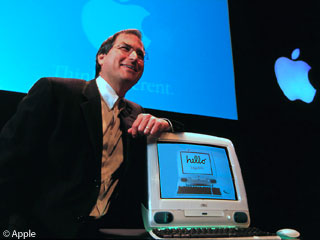 “On May 6, 1998, Steve Jobs took the stage and announced the iMac G3, a consumer counterpart to the G3-powered Power Mac and PowerBook, the only remaining computers in Apple’s lineup after he had slashed all other machines, including the popular Performa line.
“On May 6, 1998, Steve Jobs took the stage and announced the iMac G3, a consumer counterpart to the G3-powered Power Mac and PowerBook, the only remaining computers in Apple’s lineup after he had slashed all other machines, including the popular Performa line.
“‘The back of our computer,’ he said, ‘looks better than the front of the other guys’. It looks like it’s from another planet. A good planet. A planet with better designers.’
“‘iMac comes from the marriage of the excitement of the Internet with the simplicity of Macintosh,’ he said. Internet usage was ‘the number one use’ consumers wanted, and the iMac was built to make that easy.
“The iMac started the ‘i’ revolution. Jobs said the i stood for: internet, individual, instruct, inform, inspire.
“In addition to the consumer, Apple aimed the iMac at the education market, one of the company’s few remaining strongholds in the market at the time.
“With the iMac, Apple returned to Jobs’ vision of an all-in-one computer, with all of the guts in the same case as the display. In a world of messy PCs, the iMac stood out as a simple, elegant computing solution.
“While most of the computers at the time were beige boxes – including Apple’s other desktops – the iMac G3 was Bondi blue, curvy and translucent.”
Hackett goes on to look further at the original iMac as well as the “fruit flavored” tray-load models that followed it and the whole range of slot-load iMacs, the last of which were discontinued in 2002.
Link: The Macintosh That Saved Apple
Egg Freckles Remembers the SuperDisk
Thomas Brand reminisces about when the first iMac made its debut in August 1998:
“The iMac was . . . the first Mac to lose the venerable 3.5 inch floppy. A data transport medium that had become synonymous with personal computing since the introduction of the first Macintosh in 1984.”
“…the 3.5 inch floppy has adorned the face of every desktop Macintosh until the arrival of the iMac. Its low-cost contributed to the success of Sneakernet, and by 1988 its capacity had more than tripled [from 400 KB – ed] to 1.44 MBs. Perfect for sharing data between colleagues and friends. The 3.5 floppy remained the default file sharing medium on the Macintosh for nearly 15 years.
“But by 1998 the average hard drive could carry thousands of floppies worth of data . . . 1.44 MBs on a durable plastic disk didn’t go as far as it once did, and early iMac adopters were scrambling to find a USB compatible alternative in the days before always-on broadband, burnable CD-R, and disposable USB flash drives.
“The Imation SuperDisk was just one such alternative. Capable of holding either 120 or 240 MBs1. SuperDisk drives were backwards compatible with 1.44 MB floppies, and released around the same time as the first iMac. They even came in matching Bondi Blue with pinstripe accents.”
“Despite it’s larger capacity, and backwards compatibility, the Imation SuperDisk saw very little success among PC manufacturers, thanks to the Zip drive’s three year lead. SuperDisk still managed to become a popular peripheral among early iMac users because of its USB compatibility, and ability to read standard 1.44 Macintosh formatted floppies.2
“The SuperDisk was a favorite among few, but an interesting anecdote in the Mac’s past. It brought backwards compatibility to some, and helped pave the transition to Apple’s forward looking future3.”
- The LS-240 SuperDisk has double the capacity of the LS-120 and the added feature of being able to format regular floppy disks to 32 MB capacity. However, this higher density comes at a price – the entire disk must be rewritten any time a change is made, and can only be read in a compatible LS-240 SuperDisk drive.
- Apple Macintosh users’ primary complaint was that the SuperDisk drive cannot read the GCR 800 KB or 400 KB diskettes used by older Macintoshes.
- SuperDisks are still supported by Mac OS X, and got an updated icon in 10.8 Mountain Lion.
Link: SuperDisk
The PowerBook G3 Era
512 Pixels’ Stephen Hackett takes a look back at the era of G3 PowerBooks:
“…the PowerBook G3 line of notebooks helped revive Apple in the late 90s and the first year of the 21st century. Apple took the power of the G3 processor and put it in a mobile workhorse. Let’s look at exactly what the company did with these machines:
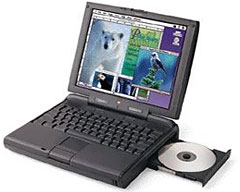 “In many ways, the original PowerBook G3 was a stopgap machine. Only available from November 1997 to May 1998, the machine was basically a PowerBook 3400c with a 250 MHz G3 processor, faster motherboard and quicker RAM. (In fact, this machine is sometimes nicknamed the 3500.) These upgrades made the Kanga twice as fast as the the 240 MHz PPC 603ev-based 3400c.”
“In many ways, the original PowerBook G3 was a stopgap machine. Only available from November 1997 to May 1998, the machine was basically a PowerBook 3400c with a 250 MHz G3 processor, faster motherboard and quicker RAM. (In fact, this machine is sometimes nicknamed the 3500.) These upgrades made the Kanga twice as fast as the the 240 MHz PPC 603ev-based 3400c.”
“The Kanga is the only G3-powered Macintosh that is not officially compatible with OS X.
 “Introduced in May 1998, [WallStreet] was a very different animal than the original PowerBook G3. With options for a 12″ passive matrix LCD, a 13.3″ TFT LCD, and a 14.1″ TFT LCD, the WallStreet sported a brand new design that was both thinner and lighter than the PowerBook G3 before it.
“Introduced in May 1998, [WallStreet] was a very different animal than the original PowerBook G3. With options for a 12″ passive matrix LCD, a 13.3″ TFT LCD, and a 14.1″ TFT LCD, the WallStreet sported a brand new design that was both thinner and lighter than the PowerBook G3 before it.
“Available with 233 MHz, 250 MHz, or 292 MHz G3 processors, the upper two models were a good bit faster, thanks to a full megabyte of L2 cache.”
“This model [WallStreet II or PDQ] was an answer to supply and heat problems that had plagued Apple with the previous machine. By standardizing the bus speed (to 66 MHz) and the screen size (to 14.1 inch), Apple had the ability to ship fewer options, making production run much smoother.
The 233 MHz was initially sold for $2,799, the 266 MHz model for $3,499, and the 300 MHz model for $3,999. Unlike before, all three models included a backside cache.”
“The WallStreet II was the last Old-World ROM notebook to ship from Apple.
 “Also known as the ‘Bronze Keyboard’ PowerBook, the third-generation of the PowerBook G3 Series [Lombard] went for sale in May 1999. It was two pounds lighter than the WallStreets and nearly 20 percent thinner.
“Also known as the ‘Bronze Keyboard’ PowerBook, the third-generation of the PowerBook G3 Series [Lombard] went for sale in May 1999. It was two pounds lighter than the WallStreets and nearly 20 percent thinner.
“This laptop dropped ADB support, came with just one PC Card slot and was the last to include built-in SCSI.”
“These notebooks required Mac OS 8.6 or later, but can run up to Mac OS X 10.3.9.
“The last PowerBook with a G3 processor ironically dropped the ‘G3’ in the name.
“The Pismo was introduced in February 2000.”
“The machine brought lots of new technology to the PowerBook line, including FireWire 400 and Clamshell Mode.
“The Pismo required Mac OS 9.0.2, and can run up to Mac OS X
10.4.11.”
“…it’s easy to see just how important the PowerBook G3s were to Apple. The machines bridged the gap between old-school and modern Macs, and each generation included significant progress in Apple’s mobile technology.
“When it comes to expandability, nothing beats these machines. With two bays, users could swap in floppy drives, optical drives, and even a second battery. In fact, with after-market batteries, Pismo users can see up to 16 hours of battery life.”
“…these PowerBooks aren’t super useful these days. If you’re set on using one, a loaded Pismo is the way to go. I had one up until a few years ago when the logicboard died. I parted it out, and every once in a while, I scour eBay for a replacement. There’s just a charm about these machines that current Apple notebooks lack.”
Link: On the PowerBook G3
Software
TenFourBird 17 Email Client for PowerPC Released
TenFourBird is a mail user agent for PowerPC Mac. It based on Mozilla Thunderbird and TenFourFox.
Latest version is 17.0.
TenFourBird is free and offers separate builds for various PowerPC Mac processor series.
Link: TenFourBird
* Although Apple defines vintage as models discontinued over five years ago but less than seven years ago (at which point Apple calls them obsolete), we prefer a
definition that has more to do with a lack of functionality and the end of active support by Apple than with how long Apple makes service parts available.
Dictionary definitions of the word vintage start out with wine, but it is also applied to a group of items that share
certain characteristics, originated in a specific time period, and/or
is characterized by excellence, maturity, and enduring appeal – a
classic.
As we use the term here, vintage refers to Macs and related software, operating systems, and peripherals that
Apple has left behind over the years, whether that’s an original
Macintosh or a Power Mac G5 running OS X 10.5 Leopard. At present, we
consider all pre-Intel Macs and all versions of OS X that run on them
vintage (and at some point we’ll extend that definition to include
Intel Macs that can’t run OS X 10.7 Lion, and so on).


Hi hope you can help me. I have some older mac equipment, printers, scanners, peripherals etc. that I would like to sell. Any suggestions?
Barry Rosenblatt
Suggest you try our LEM Swap group – http://groups.google.com/group/lemswap